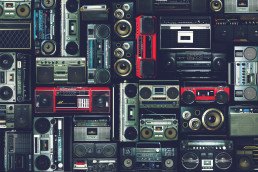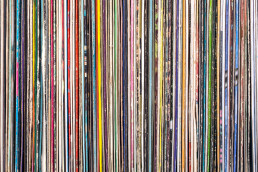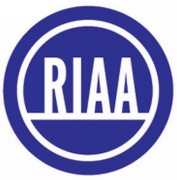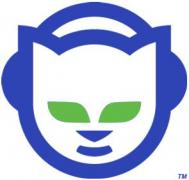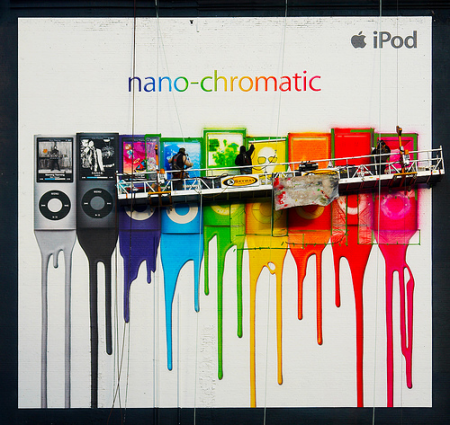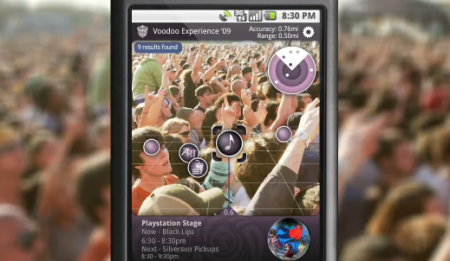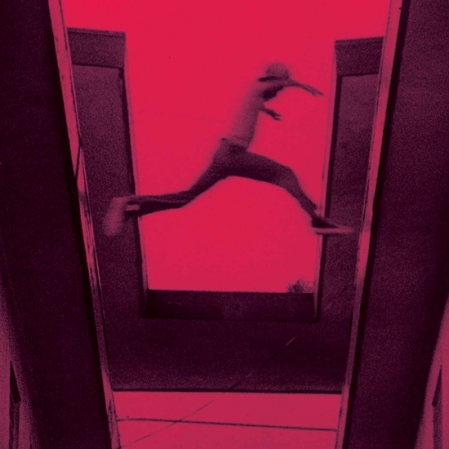Thinking Cities
We've been daydreaming and dreaming about the future of Cleveland since Hallie's first day back in the city and my first day ever in the city. It's our passion to understand current urbanization trends and adapt those best practices to our city. We all need to understand these trends, because each of us will be affected and more importantly, some trends may reflect your passions in life allowing you to get involved and not only voice your opinion, but actively participate in the future of Cleveland. Before you can do this, you need to understand those trends, a documentary called Networked Society does an excellent job of revealing this information.
As we enter a new era of mobility, an emerging mindset is creating endless opportunities that are limited only by our imaginations. Technology has enabled us to interact, innovate and share knowledge in entirely new ways – creating a dynamic shift in mindset. People are empowered, business is liberated and society is more connected than ever. At Ericsson, we’re just beginning to explore the possibilities of a Networked Society.
The urbanization trends featured in this documentary rely on information and communication technology (ICT) immensely. There are also a few excellent case studies to illustrate the trend.
- The Science of Cities
- The Talking City (Case Study: Trash Track Project)
- The Social City (Case Study: Citizens Connect)
- The Smart City (Case Study: Stockholm Royal Seaport)
The contributing experts are:
- Geoffrey West, Physicist, Distinguished Professor, Santa Fe Institute
- Carlo Ratti, Director MIT’s SENSEable City Lab
- Mathieu Lefevre, Executive Director, New Cities Foundation
- Elaine Weidman, VP, Sustainability and Corporate Responsibility, Ericcson
- Nigel Jacob, Co-Chair, Mayor's Office of New Urban Mechanics, City of Boston
- Jonas Claesson, Urban Planner, Stockholm Royal Seaport
- Marie Fossum, VP, New Business, Fortum
The documentary analyzes the cities of Stockholm and Boston in regard to the trends identified throughout the documentary. Our hope is to bring these innovations to Cleveland and we know you share the same hopes and dreams for the city we all love. What lessons can we learn from this? And how can we reinvent Cleveland together?
Remix the City
Once again, mobile apps are redefining how artists compose music. I stumbled upon this app the other day and immediately saw the potential in utilizing this technology for the CLE. The app is called Fresh Push Play, it was developed by W+K Tokyo Lab, HIFANA (a breakbeats duo from Tokyo that created the Nike Music Shoe) and Rhizomatiks. HIFANA launched the app by taking it to the streets of Tokyo and documenting their journey, collecting sounds of the city as they explored, until they reached their destination - a show with friends performed with only their iPhones and iPads.
Just imagine the potential for CLE. Can you imagine the song that we could create for Cleveland?
Art, Science & Technology in Music

Bjork's latest album may be her most ambitious project yet. Biophilia is a collection of songs composed with the themes of nature, science and humanity infused. For preparation, Bjork researched astrophysics, string theory, neurology, biology and other domains where science and music collide.
Listen to Bjork "Biophilia" in its entirety here on NPR Music.

With this inspiration for Biophilia, Bjork then created a unique environment to experience the music. The Biophilia app immerses the user into an intricate galaxy, with ten different destinations, each representing unique songs. Each song is available to purchase and download in-app, for $1.99 each. According to the app’s release notes:
Biophilia is an extraordinary and innovative multimedia exploration of music, nature and technology by the musician Bjork. Comprising a suite of original music and interactive, educational artworks and musical artifacts, Biophilia is released as ten in-app experiences that are accessed as you fly through a three-dimensional galaxy that accompanies the album’s theme song Cosmogony. All of the album’s songs gradually become available inside Biophilia as interactive experiences, beginning with the first single Crystalline.
Download the Bjork "Biophilia" iPhone and iPad app here.
Read, learn and explore other digital music innovations in our series of posts called "A Digital Rolling Stone."
MIT Media Lab
Actively promoting a unique, anti-disciplinary culture, the MIT Media Lab goes beyond known boundaries and disciplines, encouraging the most unconventional mixing and matching of seemingly disparate research areas. It creates disruptive technologies that happen at the edges, pioneering such areas as wearable computing, tangible interfaces, and affective computing.
To honor 25 years of innovation, MIT Media Lab recently unveiled their brilliant new brand identity. The logo is built using an algorithm that creates 40,000 permutations with different shape and color combinations.
[hr align="center"]
Brand Identity
[hr align="center"]
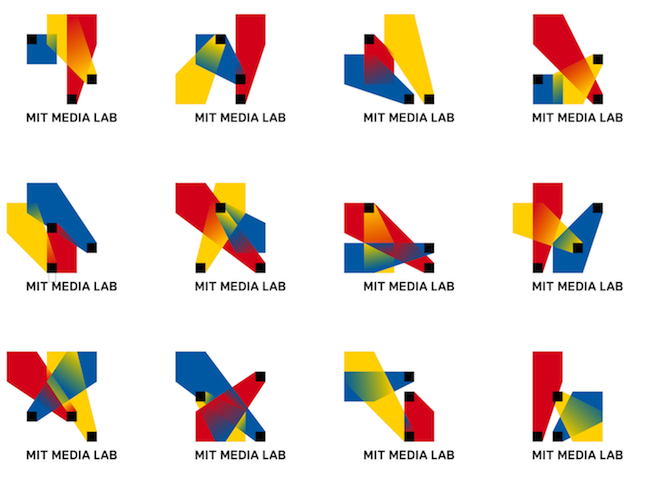
Intentionally Passive Music Composition
Intentionally passive music composition has interested me for quite some time. This is the idea that we can create music by strategically planning for specific outcomes to create beautiful music; such as harnessing gravity, nature or the elements to create music organically.
One of my favorite recent examples of this is Conductor, which harnesses the NYC subway system and turns it into an interactive string instrument. Using the MTA's actual subway schedule, the piece begins in real-time by spawning trains which departed in the last minute, then continues accelerating through a 24 hour loop.
Read more about music composition in the digital age here.
2011 SXSW Interactive Festival Panel - VOTE!
Over a month ago I submitted a panel proposal to the 2011 South by Southwest (SXSW) Interactive festival and am pleased to announce it has been included in the PanelPicker voting process! The panel is called “A Digital Rolling Stone: Disruptive Technology & Music” and it will analyze the current digital ecosystem to reveal the disruptive technologies and methods that will revolutionize the way music is created and experienced in the future.
2011 PanelPicker Voting Has Begun!

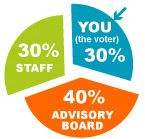
To get started you first need to, create a free PanelPicker account. After that, give “A Digital Rolling Stone: Disruptive Technology & Music” a “thumbs up.” Voting will close on Friday, August 27th, so make sure you vote soon.
Hope to see you in Austin!
– Eric
A Digital Rolling Stone 3.0 - Composition in the Digital Age
Inspired Creation
In this installment of A Digital Rolling Stone, we analyze the composition and creation of music in the digital age. If you are a musician, you know that the process of composing and creating music is difficult, demanding and at times, frustrating. However, it is also exhilarating and inspiring; especially during collaboration or improvisation. Similar to many musicians, I love jamming with friends and creating something new - challenging myself to play something I have never played before or anyone has heard. In science, improvisation is experimentation; and musicians follow a similar scientific method:
- Define the musical challenge
- Consider and select instrumentation (or media)
- Hypothesize how the media will affect the composition and sound on a macro and micro level
- Perform the experiment by playing and reacting to pitch, rhythm, dynamics, visual movements and the mood
- Analyze the expression of logic and emotion
- Interpret sound and draw conclusions to create a new hypothesis
- Store in memory, perform live or record
- Practice
For me, I find step two to be the most interesting. The consideration and selection of instrumentation or the media that creates the layers of sound, is the point where true creativity is actualized. At MSU, my art professor showed us a documentary film on Fred Frith (an experimental musician and composer) called "Step Across the Border." The reason he showed us a film about music in art class was because Frith challenged the historical notion of music by reconsidering harmonies, melodies and instrumentation to create something creative and innovative. Beyond the known.
This approach may yield unusual or uncomfortable results, but if you embrace the unknown and explore, you will reach great heights. Some may view this form of creativity to be limited to artistic expression only and unable to reach commercial success. Depending on your aspirations, this may or may not be important to you. Regardless of your intentions, audiences will adopt artistic expression similar to the diffusion of innovation, such as in the case of art by Pogo with the visual, musical mash-up called Alice or his most recent creation, Gardyn. This art later inspired Craftsman allowing them to experience great commercial success with their contagious online video.
How does this notion apply to musical composition in the digital age? As a musician, it is important to understand how you can change your perspective and expose yourself to opportunities that may inspire you. From a commercial perspective, Craftsman was able to do this by taking inspiration from Pogo's art. Lastly, the ability to utilize available digital technologies as media, is essential in composing music in the digital age.
Art in Translation
Within the past 6 months, I have found several examples of digital music composition as art installation, such as 40 wild birds playing a Gibson Les Paul. This showcases how nature can provide new layers for instrumentation; other examples include the sun or even rain. These examples exhibit music composition in the digital age, however reveal an interesting and important insight - that idea that music can be composed passively rather than actively. Also, new layers of instrumentation using digital technology can also allow one to invent new instruments.
Digital Instrumentation - Intentionally Passive
The disciplines of science and technology with artistic expression converged in the mind of Kawase Kohsk when he created BEARINGS GLOCKEN, a musical instrument that automatically performs a glockenspiel using steel ball bearings. The music is created after calculating the relationship between the ball bearings and intentional path. An interesting note from the creator is that people "have fewer and fewer chances to experience live performance. These days we can even listen to music on mobile phones. But, I want people to know the richness, power, impact, and vividness of sound created right before your eyes."
Digital Instrumentation - Gestural Interactions with Sound
Back in the day when you wanted to start a band, you searched for friends that played guitar, bass, drums and someone that could sing. Now, all you need is your computer. In my eyes, this does diminish the creativity and spontaneity that comes from colliding musical visions between opposing artists, however technology has provided a new canvas with multiple dimensions. This can be as basic as a "simple sinewave synthesizer triggered by an ordinary 16 step sequencer," also known as the ToneMatrix. I found this synthesizer a while ago and became addicted. This synthesizer from aM laboratory by Andre Michelle, interprets user interaction and creates a revolving, dynamic wave of music. This idea is taken to the next level with the Artikulator, a multi-touch musical instrument created by "Mike Rotondo and Luke Iannini in about 24 hours during a Music Hackday, a series of events that combines art and technology with fascinating results" (via Mashable).
A new company called Liine, whose "aim is to redefine the way people interact with sound," has created a new digital instrument called Griid, an expressive and tactile live performance app for the Apple iPad, iPhone or iPod Touch. Imagine taking the ToneMatrix or Artikulator and mashing it with a turntable. According to this article, Richie Hawtin, a well-known Canadian DJ who has been influential in the Detroit techno movement, previewed Griid at the Movement: Detroit Electronic Music Festival before his performance. As mentioned earlier, improvisation is experimentation. And for a DJ, experimentation and adaptation is your platform for performance. Dynamic musical performances created by user interaction on the digital app Griid enables true improvisation during live performances.
Sadly, at the end of June, Hawtin reported that someone stole his Macbook, two iPads and iPod from his hotel shortly after announcing the Griid in Paris. No longer will thieves steal distortion pedals and guitars, but instead your digital, computerized instruments.
Digital Instrumentation - Physical Interactions with Sound
The Eigenharp is an electronic musical instrument that allows musicians to play and improvise via expressive physical interaction, creating a limitless range of sounds. According to the Eigenharp website, it "can play and record loops, change scale and key, transpose, alter tempo, program beats, create arrangements, switch and layer multiple sounds, all while the musician is performing live on stage."
This next example of physical interactions with sound is for entertainment value only, however very creative. This creativity allowed Nike to break outside of the norm and re-imagine what their shoes could be to create an analogy and communicate the essence of the product - freedom to just do it. Obviously these shoes do not make music when bent or twisted, but creativity, imagination and physical interactions allowed Nike to create an entertaining, contagious video that made many people wonder, how did they do that? And the video has received almost 800,000 views on YouTube.
Digital Instrumentation - The Algorithm
If Google created a musical instrument, it would be Tristan Perich's 1-Bit Symphony, an electronic composition in five movements on a single microchip. As described by Perich, though the composition is "housed in a CD jewel case, 1-Bit Symphony is not a recording in the traditional sense; it literally 'performs' its music live when turned on." Perich programmed and assembled the electronic circuit utilizing "on and off electrical pulses, synthesized by assembly code and routed from microchip to speaker, to manifest data as sound."
Digital Collaboration
All the examples presented showcase the vanguard of digital instrumentation. But how can we take these new methods and instruments and compose music in a way that would reflect the digital age? In a Wired article titled "Help Wired.com Crowdsource This Song" by Eliot Van Buskirk, we get a preview of a new musical environment that supports collaborative music creation online - Indaba.
When I lived in Boston, I was in an indie post rock band. We toured the midwest and eastcoast, everywhere from Boston to New York to Philly to Madison to St. Louis. We even recorded an album and released it on vinyl with a digital download. However, I moved to Cleveland and our lead guitarist, Danielle (Danielle was on my SXSW Interactive Festival panel "Big Brother in Your Brain: Neuroscience and Marketing") moved to Charlottesville. So that was it, our band broke up. However, if we could remove the barriers of space and time, we could play again. Many musicians have experienced this, and many have dreamed of Indaba. This new common ground for musicians, combined with the accessibility to musical inspiration worldwide, allows musicians to transcend many of the restrictions that have been in place for years. Let there be music.
A Digital Rolling Stone has sustained the hypothesis that IF the music industry wants to be profitable and relevant THEN the music industry must progress with and reflect culture while integrating technologies that create an augmented experience for the music enthusiast. The future of music composition is bright if musicians and inventors continue to work together and create new instruments like the examples mentioned above. All of these reflect cultural trends and integrate current technologies to expand instrumentation and further the advancement and innovation of digital music.
SXSW
Project
2010 South by Southwest Interactive Festival "Big Brother in Your Brain: Neuroscience and Marketing" Panel
Description
For the 2010 SXSWi Festival, Eric curated, organized and spoke on the panel “Big Brother in Your Brain: Neuroscience and Marketing.” The panel included a diverse group of talented individuals from the fields of neuroscience, neuromarketing and marketing; including Dr. A.K. Pradeep of Neurofocus (a Nielsen company); Roger Dooley, the author of Brainfluence; Gary Koepke, Vice President, Global Executive Creative Director, Brand Content Innovation at SapientNitro; and Dr. Danielle Stolzenberg, Assistant Professor of Neuroscience at the University of California, Davis. The result was an engaging and thought-provoking conversation and debate on the convergence of cognitive neuroscience and marketing in a standing only conference room for 600 people in Austin, Texas. The source of inspiration for the panel was a blog post Eric wrote titled, "The Convergence of Cognitive Neuroscience and Marketing."
A Digital Rolling Stone 2.0
Introduction
It seems only appropriate that I'm finally finishing the second installment of A Digital Rolling Stone, a month after the tenth anniversary of the Recording Industry Association of America (RIAA) suing Napster for allowing millions of consumers to download free, copyright music. The result as you know, was a federal judge and appeals court finally ruling in 2002 that Napster was liable for contributory copyright violations. This marked the beginning of my fascination with the progression of music culture and marketing. However, it was my love for music that actually introduced me to advertising and marketing. It was interesting to observe how Napster affected consumer behavior and perceptions, the practice and business model of music and caused great controversy.
Within the music industry, musicians shared divergent ideologies. Artist such as Dr. Dre and Lars Ulrich (Metallica) insisted that peer-to-peer (P2P) file sharing would ruin the music industry and asserted that this belief was not based on profitability, but control over their creative expression. Also, along with the RIAA, many musicians attacked consumers with trial court orders. I'm not sure if this really supports their argument for creative expression over profitability, unless of course they just wanted justice. And they got it.
Napster became a part of pop culture and died the death of a pop star - abruptly and at a young age. And so did many of Napster's successors like Gnutella, Kazaa and BitTorrent. And worst of all, MP3s and P2P sharing changed consumer behavior and perceptions immensely and left consumers without any source to fulfill their music needs and desires. These changes include:
- Acquisition & Accessibility: Consumers no longer visit brick & mortars, but instead download music online
- Emotional Response: Digital music provides instant gratification for consumers, as they can download music when they want, wherever they want. While traditional forms require patience, which is not common in the digital age
- Morals & Ethics: Consumers were accustomed to downloading music illegally instead of purchasing the music and did not question their behavior, until they were attacked by the industry
- Decision Making Process: Consumers were influenced by online friends that shared similar music tastes
- Convenience & Portability: The actual tangible element changed from CDs to a digital form as MP3 files, making it much easier to transport and experience
- Listening: Consumers no longer listened to albums as complete compositions, but instead as individual songs in random order (e.g. shuffle)
- Form & Function: Historically, consumers collected the jackets/sleeves of records and even CD cases, however since the tangible element has changed, many consumers no longer value the form, but only the function (however vinyl records are making a comeback, more on this later)
This also changed the practice and business model of music forever, specifically in regard to the marketing mix:
- Product: While the actual cost of producing music did not change much, the process of producing the music form and distribution changed dramatically (e.g. CD to MP3)
- Price: Instead of purchasing an album for $10 or $12, consumer began to purchase individual songs at $0.99. It was a return to the days of 45 RPM records, when artists released singles. However, due to the distribution method, it was even more compelling and convenient for the consumer to accept this pricing structure. Also, as musicians began to realize that illegal downloading was hurting their bottom line, they changed their marketing strategy and began to focus more on concerts and apparel as a form of revenue
- Promotion: Promotional tactics also changed immensely with digital technology. Before the internet and Napster, bands had to create press kits to get shows, promote shows using posters, tour relentlessly and pray that a record label would catch them at a show. However, Napster allowed consumers to view and download music files on their friends' computers and word of mouth (WOM) became a powerful factor in the marketing mix. Social media sites like MySpace and Facebook allowed bands to create profiles and share their music online to a broad audience without getting a record deal and in some cases it facilitated record deals. Consumer behavior became the source of WOM in cases like iLike, Last.FM and Pandora.
- Place (Distribution): Consumers could now download music whenever and wherever they wanted and in some cases could work directly with the artists they loved
As a music enthusiast and musician, I have a unique perspective on this topic. I believe that everyone should have accessibility to not only music, but all arts: dance, literature, film, photography, paintings, etc. The arts provide an experience unlike any other, experiences that are:
- Entertaining: The inherent ability of the arts to stimulate all five of the senses (sight, hearing, touch, smell, taste) and in a manner that can affect your emotional and rational state of mind
- Inspirational: The chord progression of an orchestrated composition or punk-rock anthem, a Van Gogh or Dondi; or a sonnet or manifesto can inspire you to view the world from a different perspective and develop innovative ideas
- Educational: The arts enhance critical thinking and teamwork skills in students. More specifically, learning and performing music as well as attendance at music performances improves reading, math and science skills in students
While I do believe everyone should have access to the arts, I also believe there is a compelling business opportunity to inform and persuade the consumer, even during this consumer behavioral transformation and digital movement. This intriguing transformation inspired me to approach this problem and find a resolution during my experience in the Master of Arts in Advertising program at Michigan State University years ago; here are my results. I then approached this problem again in a blog post titled "A Digital Rolling Stone 1.0." In this analysis, I hypothesized that the music industry must progress with culture in order to remain profitable and relevant by reflecting cultural trends and integrating technologies that create an experience for the consumer with added value. This hypothesis was composed over a year ago and I have collected several case studies that document this consumer behavioral transformation in regard to music and the brands that have effectively progressed with culture to create augmented experiences for the consumer. Also, in the case studies below, I have also identified the casual attributes for marketing success and recommendations to continue these innovations in the music industry. Lastly, unlike artists before them, artists such as Radiohead and Trent Reznor of NIN understood not only the consumer, but the future of music. They paved the way for many musicians to find a sustainable business model in the digital age and seize OFF=ON opportunities.
Applications
As music aficionados continue to battle over the death of the album or resurgence of vinyl, there are several cases that show interactive and mobile applications are emerging as a viable form and part of the marketing mix for musicians. Deadmau5, a Grammy-nominated electronic artist created an iPhone app, available on iTunes for $3, that allows users to mix and remix every song on the album. Users can modify the beats-per-minute, apply effects, loop and cross fade between tracks that they create (via Wired).
In addition to releasing "The Slip" online as a free download and under a Creative Commons license (attribution-noncommercial share-alike) allowing fans to create derivative works for non-profit use as long as the source is attributed. Trent Reznor of NIN has created many innovative experiences for fans. One of which includes NIN Access, a GPS-enabled iPhone app that allows fans to post messages or photos and communicate with people in the same geographical area via the app. It is completely integrated with the social media platform on NIN.com and utilizes many open source APIs (e.g. Flickr, YouTube, Google Earth, etc.) to extend the NIN experience across multiple platforms, not just NIN.com. As culture and technology continues to evolve, so will the music industry. This evolution provides more business and marketing opportunities for artists. As Reznor stated in a Wired interview, "As an artist, you are now the marketer."
Augmented Reality
Augmented reality (AR) been all the rage for the past year or so with brands like GE and BMW creating amazing experiences for consumers; however, could AR apps be just another fad? Do they really provide value to the consumer? What are the benefits? AR can provide value if the idea is inherent to the product or service. For example, Yelp provides consumer reviews and local search capabilities for users on Yelp.com. The Yelp mobile app provides the same thing, however it includes augmented reality, allowing users to utilize their handset's built-in camera to visually experience consumer reviews and local search. The AR is the service and the service is augmented with AR.
How can musicians apply augmented reality to enhance their product? Zehnder Communications, an advertising agency in New Orleans, did just that. Zehnder created the Voodoo app using Layar 2.0 (an augmented reality browser) to allow festival-goers to view artist information, concert schedules and stage locations using Android smart phones or Apple iPhones. View a demonstration of the app here. The key with AR is to not only make it entertaining, but also useful.
Crowdsourcing & Content Curation
In Bb 2.0 is my favorite interactive music experience created thus far. It is a collaborative movement initiated and created by Darren Solomon from Science for Girls, and brought to live by combining the contributions of a community. Multiple YouTube videos of instruments, voices or sounds in Bb, are combined on one page. This allows the User to simultaneously play and mix sounds at their own discretion to create a new composition. It all started out with a few YouTube videos that Solomon recorded of himself playing instruments (glass marimba, electric guitar, Kaoss Pad/synth, Rhodes electric piano, and the electric bass) in Bb, at no specific tempo or groove. Solomon then utilized crowdsourcing and called for submissions online for people to record their own YouTube videos and the movement of In Bb was born.
The composition of music can be a personal experience or one shared with others through collaboration. Artists like Darren Solomon or those musicians involved in the YouTube Symphony Orchestra embrace collaboration. Another example of crowdsourcing with a bit of content curation is Taped Together by Maria (@brainpicker) & Mel (@melex). Imagine creating the perfect playlist and then allowing people to reflect upon their selection, all online, bringing you the modern day mixtape with emotion. The concept is best explained by the creators:
"We... love music. And we think crowdsourcing and content curation are two of today's most powerful cultural propellers – seeming opposites with an even more powerful intersection. So, we're doing the obvious: Crowdsourcing a seasonal playlist from interesting people we know. Each day of December, we're uploading one season-inspired song, curated by a different person. On December 31, we're putting the compilation together as the world's first crowd-curated holiday playlist for anyone who wants one."
Exclusive Content
Many professional and indie artists have argued that record labels are no longer needed in the current music environment, however there are some record labels that are doing their job. According the the Paste Magazine article "EMI Becomes First Record Label to Provide Hulu-Exclusive Videos" written by Christina Lee:
"EMI has struck a deal with Hulu to become its first record-label partner, and is set to distribute music videos and concert footage exclusively through the video-sharing site."
This exclusive video content included in Norah Jones' new video and never before seen footage from a previous concert. This is a great idea, however P2P downloading could become a competitive force if not implemented or enforced effectively.
Interactive Experiences: Video Kill the Radio Star
The Cold War Kids took the basic idea of multi-track recording and created an engaging, interactive music video that is brilliant. In "I've Seen Enough," each of the 4 musicians in Cold War Kids have 4 pre-recorded audio tracks with corresponding visual performances resulting in 16 total different performances and allowing the user to explore and re-create 256 permutations of the song ranging from the album version to acoustic versions to solos.
Like the Cold War Kids, the current music video format just wasn't enough for AC/DC. So they turned to an unlikely source of inspiration for their music video "Rock N Roll Train": Microsoft Excel. While the AC/DC concept is not nearly as interactive, it does have a true lo-fi feel that anyone would appreciate.
Lifestyle Integration
Among the many elements that must be analyzed when considering brand extensions, it is important to analyze not only consumer behavior, but lifestyle. Sony PlayStation did this when they created the online service to sell books, videos and music (via Engadget). Gamers are a captive, passionate audience at their consoles playing video games for hours on end. This is a great opportunity to integrate product into the experience. Another example of lifestyle integration for music is skate videos. Growing up, my friends and I would watch skate videos before and after every skate session, and many of the songs featured introduced me to new artists and genres that would later shape my love for music. It's a powerful opportunity that leverages contextual relevancy to ultimately affect and influence consumer overt behavior by simply making the information accessible.
OFF=ON
The greatest movement for music in 2009 was the transformation of music as sound to integrated experiences, offline and online. One artist that adopted this OFF=ON approach was Mos Def with his release of the album "The Ecstatic" as a music t-shirt. In collaboration with Invisible DJ and LnA Clothing, Mos Def created a t-shirt that had a download code on the tag of the t-shirt with album artwork on the front and track listing on the back. I think this is a brilliant idea, however hope other artists utilize the opportunity to its full potential by embracing the concept and creating fashion instead of simply placing artwork on the front. Nonetheless, this is a perfect example of integrating analog and digital.
Another case study is Of Montreal's release of the album "Skeletal Lamping" as a complete package. According to the Paste Magazine article "Of Montreal reveals Skeletal Lamping package details" by Michael Saba:
"Of Montreal's stated mission with this ambitious release is to 'expand the perception of music packaging beyond traditional flat, square artwork and to bring consumers back to record stores to get it.' In other words, Of Montreal wants to save the record."
And I believe they accomplished this for their audience. The unique package included a CD, LP, poster, tote bag, t-shirt, button set, paper lantern, wall decal set and download of the album.
Open Source
To launch (RED)Wire, a digital music magazine, (RED) partnered with Modernista! and Evan Roth to create the first music video with open source code available to download. The music video is for "Brooklyn Go Hard" by Jay Z. Not only is the song great, but the video created with the typography of letters from the word "Brooklyn" is one of a kind and leaves you wondering what will come next for music videos. The open source feature also allows the song to permeate throughout the interwebs as individuals download the code and customize. On another note, Evan Roth is also the creator of the EyeWriter Initiative, make sure you check it out.
Social Media
Iceland has produced some of the most creative and innovative musicians in the past 20 years including Björk, Múm and Sigur Rós. Further, it has produced an artist, Ólafur Arnalds, that harnessed the power of social media to create an unprecedented connection and relationship with music fans.
In a More Intelligent Life interview titled, "The Q&A: Ólafur Arnalds, Musician, Experimentalist," Paul Sullivan writes that:
"After an equally compelling follow-up EP, Variations of Static (2008), Arnalds embarked on a more experimental project, which involved creating a new song every day for a week, and then immediately making it available online at foundsongs.erasedtapes.com. The project, called Found Songs, earned attention by making use of social-networking tools such as Facebook, Twitter and Flickr (on which Arnalds ran a forum/competition for corresponding artwork). Erased Tapes Records , an independent London-based label, recently released a CD, download and 10" Vinyl edition (which features seven photographs chosen from the Flickr group).
Arnalds leveraged social media and crowdsourcing to develop a magnificent composition that involved fans in the creative process, fostering a close relationship with the artist and providing a sense of ownership. Thus translating to increased interaction and encouraging word of mouth to extend the project throughout the interwebs.
Conclusion
At the close of 2009, as many people prepared for the upcoming decade, many also reflected on the past decade. In a segment from NPR's All Things Considered titled "The Decade In Music: How Musicians Create," Jacob Ganz reflected upon the digital decade and how it changed the experience of making and distributing music:
"Maybe the best way to sum up the reality of the music industry in 2009 is a Steve Albini interview with musician Ian Svenonius for VBS.tv. Keep in mind: Albini recorded classic albums by the Pixies and Nirvana and has always loudly favored analog recording. But he says the current digital trends don't bother him.
"I see these changes as changes that are happening outside of me, that I have no control over," Albini says. "So I basically treat them like the weather. Like, it's going to be kind of bloggy and MP3-ey for a while."
The music industry spent most of the past decade caught outside without a raincoat. Record labels, especially the big ones, didn't embrace digital music at first. In fact, they spent a lot of time and energy suing the source of their income: consumers."
I hope that the record labels learned from the past decade, but more importantly, I hope that the artists have learned that music whether they like it or not is their product, and can be extended regardless of the popular format of the moment because it will change. CDs are going the way of the cassette and soon MP3s will follow a similar course. However, artists will always have their product to market and must find a sustainable model that reflects culture and integrates technological innovations to seize OFF=ON opportunities.
And if all else fails, follow The Fiery Furnaces lead and release a silent record.
2010 SXSW Interactive Festival Panel Members Confirmed: & Big Brother in Your Brain: Neuroscience and Marketing"
For the past few months I have been working with the SXSW committee to finalize the members of the "Big Brother in Your Brain: Neuroscience and Marketing" panel for the 2010 SXSW Interactive Festival. And today I am proud to announce that SXSW has approved my shortlist and all speakers have confirmed their participation in the panel! The panel includes a diverse group of talented individuals from the fields of neuroscience, neuromarketing and marketing. Get ready for an engaging and thought-provoking conversation and debate on the convergence of cognitive neuroscience and marketing. More details on the panel date and time will be available in January 2010.
As a reminder to those that may not know, the source of my inspiration for this panel can be found in my blog post, The Convergence of Cognitive Neuroscience and Marketing. If you want to experience the wealth of innovative, inspirational and thought-provoking content live and in person at SXSW, register now for the 2010 SXSW Interactive Festival.
Panel Members
- Roger Dooley: Author of The Neuromarketing Blog and president of Dooley Direct, LLC. Dooley is a consultant and entrepreneur who combines knowledge of emerging phenomena like neuromarketing and social networking with decades of hands-on marketing experience. He helps companies understand the implications of new technologies and techniques, and guides them in the implementation of practical strategies to adapt to them.
- Gary Koepke: Co-founder of Modernista!
- Eric Kogelschatz: SXSW "Big Brother in Your Brain: Neuroscience and Marketing" panel creator, TEDxCLE co-founder, Senior Digital Account Executive at Marcus Thomas, co-founder shark&minnow and author of Kogelschatz on Advertising: Confessions of an Advertising Man.
- Dr. A.K. Pradeep - President and CEO of Neurofocus. Before founding NeuroFocus, Dr. Pradeep was the Founder and Managing Partner of Meridian Consulting, LLC a privately held California company specializing in governance consulting, and customizing and applying GE best practices to multiple industry sectors. He is also the founder of BoardVantage, a company founded in 2000 providing web based corporate governance platform for corporate boards of directors. Dr. Pradeep serves as Chairman of the Board of Wilderness Press and as Chairman of Vigiliant Privacy Corporation. He holds a PhD in Engineering from the University of California at Berkeley.
- Dr. Danielle Stolzenberg (moderator): Post Doctoral Fellow of Neuroscience at University of Virginia

